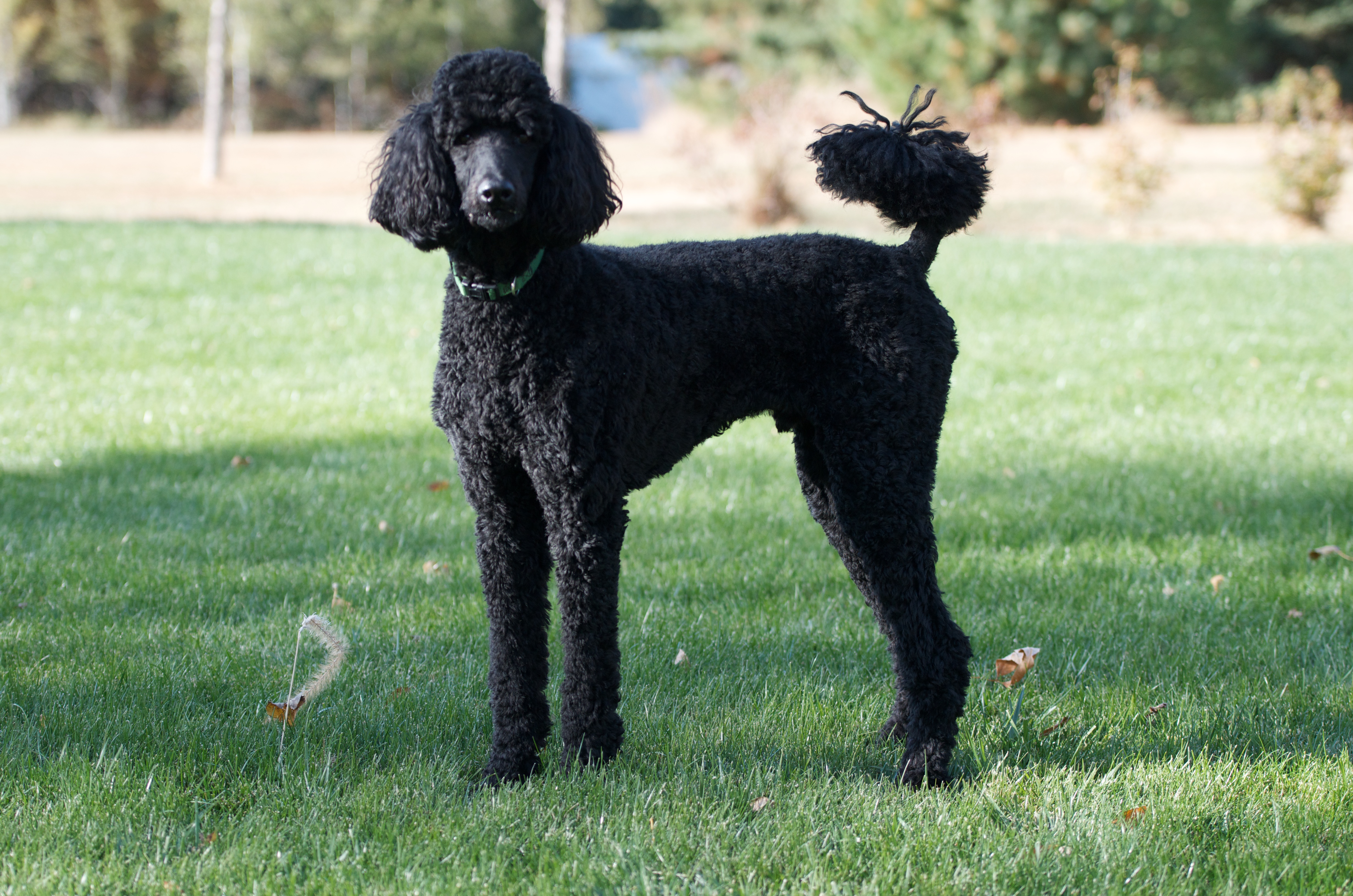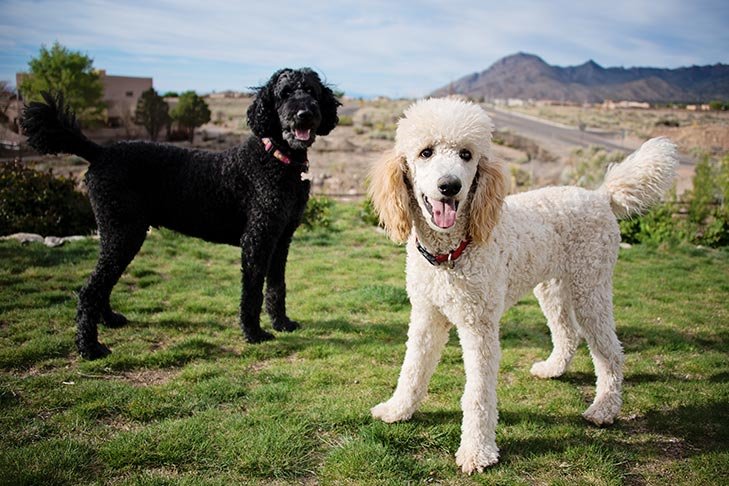The poodle, with its distinctive curly coat and elegant appearance, is a breed that has captured the hearts of many dog lovers. But have you ever wondered why poodles were originally bred? The answer might surprise you.
Originally, poodles were bred as water retrievers. Their name originates from the German word “Pudel,” which means “to splash.” With their webbed feet and waterproof coat, poodles were ideally suited for retrieving waterfowl for hunters. Their natural swimming abilities, combined with their intelligence and trainability, made them invaluable hunting companions.
The poodle was bred for its intelligence, agility, and hypoallergenic coat. Originally from Germany, poodles were used as water retrievers for hunting. Their curly coats helped protect them from the cold water. Over time, their traits and appearance were refined through selective breeding. Today, poodles are loved for their versatility and make excellent companions, show dogs, and working dogs. They excel in various activities such as obedience, agility, and search and rescue.

The Origin and Purpose of the Poodle Breed
The poodle is a highly popular breed known for its elegance, intelligence, and versatility. But have you ever wondered why the poodle was bred in the first place? The answer lies in its fascinating history and unique characteristics that make it such a beloved companion. In this article, we will explore the reasons behind the creation of the poodle and how it has become one of the most iconic dog breeds in the world.
So, why was the poodle bred? Let’s dive into the history and discover the motivations behind this remarkable breed.
1. Original Purpose as a Water Retriever
The poodle breed originated in Germany and was initially bred as a water retriever. Their unique coat, consisting of dense and curly hair, helped them stay warm and buoyant in the water. Poodles have webbed feet, which enable them to swim with ease. They were primarily used by hunters for retrieving waterfowl such as ducks and geese, as well as for other water-based activities. This original purpose explains their athleticism, agility, and swimming abilities.
Even today, these water-loving dogs excel in various canine water sports and competitions, such as dock diving and water retrieving trials. Their natural affinity for water and their remarkable swimming skills are traits that have been preserved throughout generations.
2. Evolution into a Show Dog
As poodles gained popularity as water retrievers, they also caught the attention of the French aristocracy in the 18th century. French nobles were captivated by the breed’s elegance, intelligence, and unique appearance. The poodle’s curly coat became a symbol of opulence and sophistication.
The intelligent and trainable nature of the poodle made it a favorite among many French nobles, who began to selectively breed them for the purpose of creating show dogs. The breed’s athleticism, intelligence, and distinctive appearance made it a natural fit for the world of dog shows and competitions.
Over time, breeders started focusing on refining the poodle’s appearance, leading to the development of different size variations, including the Standard, Miniature, and Toy poodles. Each size has its own unique traits and characteristics, but they all share the same elegant and intelligent nature that makes poodles stand out in the show ring.
3. Versatility and Adaptability
One of the reasons poodles continue to be a popular breed today is their incredible versatility. Throughout history, poodles have been trained and used for various purposes, including hunting, circus performing, guide and assistance work, and even truffle hunting.
Their intelligence, eagerness to please, and trainability make them highly adaptable to different tasks and environments. Poodles excel in obedience and agility competitions, as well as in various therapy and assistance roles. Their versatility has allowed them to become successful working dogs, beloved family pets, and sought-after show dogs.
4. Hypoallergenic Qualities
Another reason why poodles have become so popular is their hypoallergenic coat. Poodles have hair instead of fur, which means they shed less dander, making them suitable for people with allergies. Their curly coat also helps to trap loose hair, reducing the spread of allergens.
This hypoallergenic quality has made poodles a favorite choice for individuals and families who want a dog but are allergic to pet hair. This unique characteristic has contributed to the continued popularity of poodles as companion animals.
Conclusion
The poodle breed was initially created as a water retriever, but over time, it evolved into much more. From its origins as a working dog, the poodle has transformed into a beloved show dog, versatile working companion, and hypoallergenic family pet. Its intelligence, elegance, and adaptability have made it a cherished breed worldwide.
Whether you admire the poodle for its history, intelligence, or versatility, there’s no denying that it is a remarkable breed with a rich heritage. From its humble beginnings as a water-loving retriever to its present-day status as a cherished companion, the poodle continues to bring joy and companionship to countless households around the world.
Fascinating Facts about Poodles
Here are some fascinating facts about poodles:
- Poodles come in three size variations: Standard, Miniature, and Toy.
- The poodle’s unique curling hair is hypoallergenic and sheds less dander.
- Poodles make excellent competitors in dog sports like agility and obedience trials.
- They are highly intelligent and trainable.
- Poodles are known for their distinct “pom-poms” on their tails and legs.
Key Takeaways: Why was the Poodle Bred?
- Poodles were originally bred as water retrievers.
- Their curly coat helped protect them from cold water and provide buoyancy.
- They were prized for their intelligence and trainability.
- Poodles have been used in various roles, including hunting, circus performances, and as companion dogs.
- Today, Poodles are known for their versatility and are often used in canine competitions.
Frequently Asked Questions
The poodle is a popular breed of dog known for its distinctive curly coat and elegant appearance. But why was the poodle bred? In this section, we will answer some commonly asked questions regarding the purpose behind breeding poodles.
1. What was the original purpose of breeding poodles?
The poodle was originally bred in Germany as a water retriever. Its curly coat and webbed feet made it well-suited for swimming, and it was commonly used by hunters to retrieve waterfowl. The word “poodle” actually comes from the German word “pudel,” which means “to splash in water.”
As water retrievers, poodles were valued for their intelligence, athleticism, and ability to work in various terrains. Their compact size and agility allowed them to navigate through dense vegetation and challenging landscapes to fetch game from water bodies.
2. Were poodles bred for any other purposes?
In addition to being hunting companions, poodles were also bred for their versatility. Their intelligence and trainability made them excellent performers in circus acts and they became popular in the entertainment industry. Poodles were trained to perform tricks, dances, and entertain audiences with their agility and obedience.
Furthermore, poodles’ hypoallergenic coat made them suitable for people with allergies, leading to their role as therapy and assistance dogs. Their calm and gentle temperament, combined with their non-shedding coat, made them ideal companions for individuals with physical or emotional disabilities.
3. Are there different sizes of poodles bred for different purposes?
Yes, the poodle breed has been selectively bred into different sizes based on their purpose. The standard poodle, the largest size, was primarily used for hunting waterfowl and had the strength and endurance to withstand long days in the field. Miniature and toy poodles, on the other hand, were primarily bred for companionship and were popular among the aristocracy.
The smaller sizes of poodles were often kept as lap dogs or as fashionable accessories, with their size making them more suitable for indoor living. However, it is important to note that regardless of their size, all poodles share the same intelligence, trainability, and distinct curly coat.
4. Do poodles serve any specific roles today?
While poodles may no longer be primarily bred for hunting or circus performances, they continue to excel in various roles today. Their intelligence, hypoallergenic coat, and friendly nature make them popular choices for service dogs, such as guide dogs for the visually impaired, therapy dogs, and search and rescue dogs.
Poodles also participate in dog shows and various dog sports, showcasing their agility, obedience, and beauty. Additionally, their loving and loyal temperament makes them beloved family pets, providing companionship and affection to their owners.
5. Can poodles be kept as pets if their original purpose no longer applies?
Absolutely! Poodles make wonderful pets regardless of their original purpose. Their intelligence, trainability, and playful nature make them great companions for families, single individuals, and seniors alike. Their hypoallergenic coat also makes them suitable for households with allergies, as they tend to shed less dander.
While poodles do require regular grooming to maintain their curly coat, their versatile size options allow for a perfect fit in various living environments. Whether in an apartment or a spacious home, a poodle can adapt well to different living situations as long as they receive proper exercise, mental stimulation, and love from their owners.

What to Expect When Getting a Poodle! 6 Things to Expect When You Get a Poodle Breed Dog!
The poodle was bred for various purposes, primarily as a working dog. The breed originated in Germany and was initially used for water retrieval during hunting tasks.
However, due to their intelligence, trainability, and hypoallergenic coat, poodles have also excelled as show dogs and companions. Their versatility and adaptability make them a popular choice for families and individuals seeking a loyal and trainable pet.
